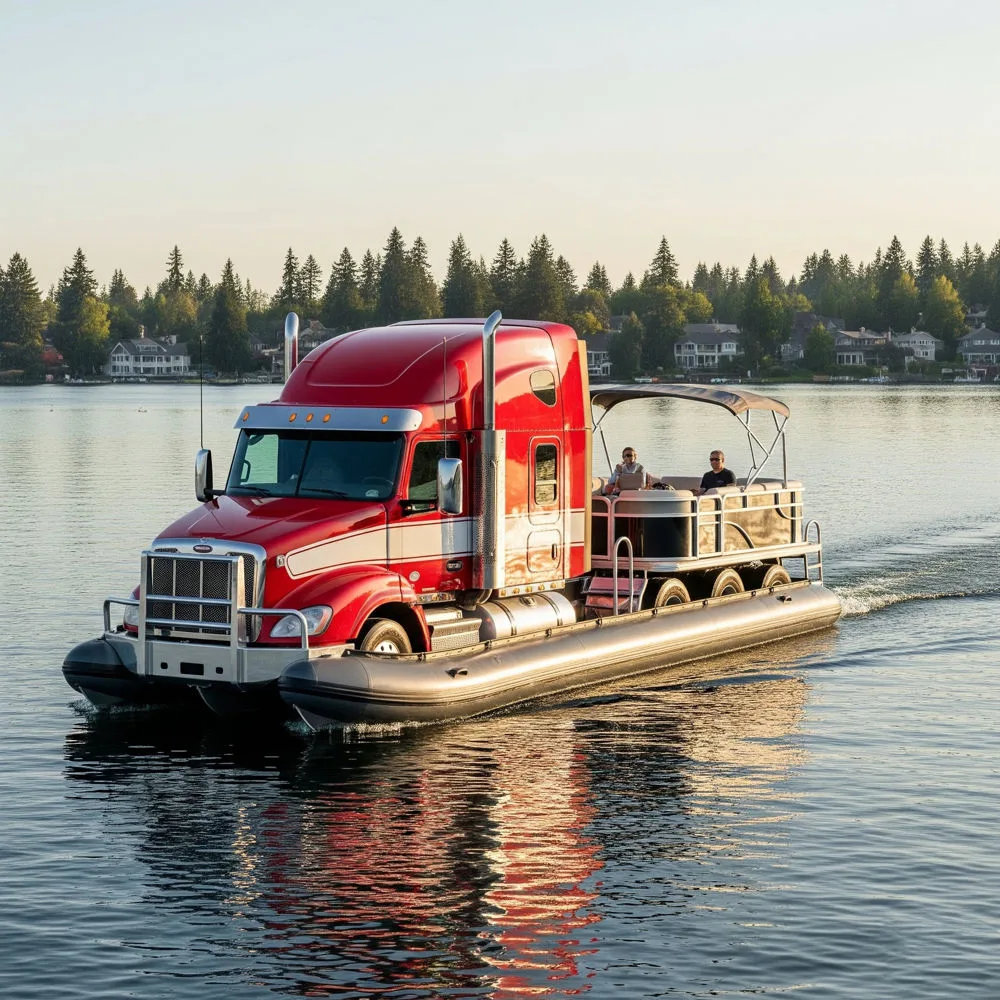The world of specialized transportation is filled with incredible engineering marvels, and among the most fascinating are semi truck pontoons. These remarkable vehicles represent the intersection of innovative design, practical logistics, and cutting edge transportation technology. Whether you’re in the construction industry, military operations, or simply curious about unique transportation solutions, understanding semi truck pontoons opens up a world of possibilities that most people never consider.
What Are Semi Truck Pontoons?
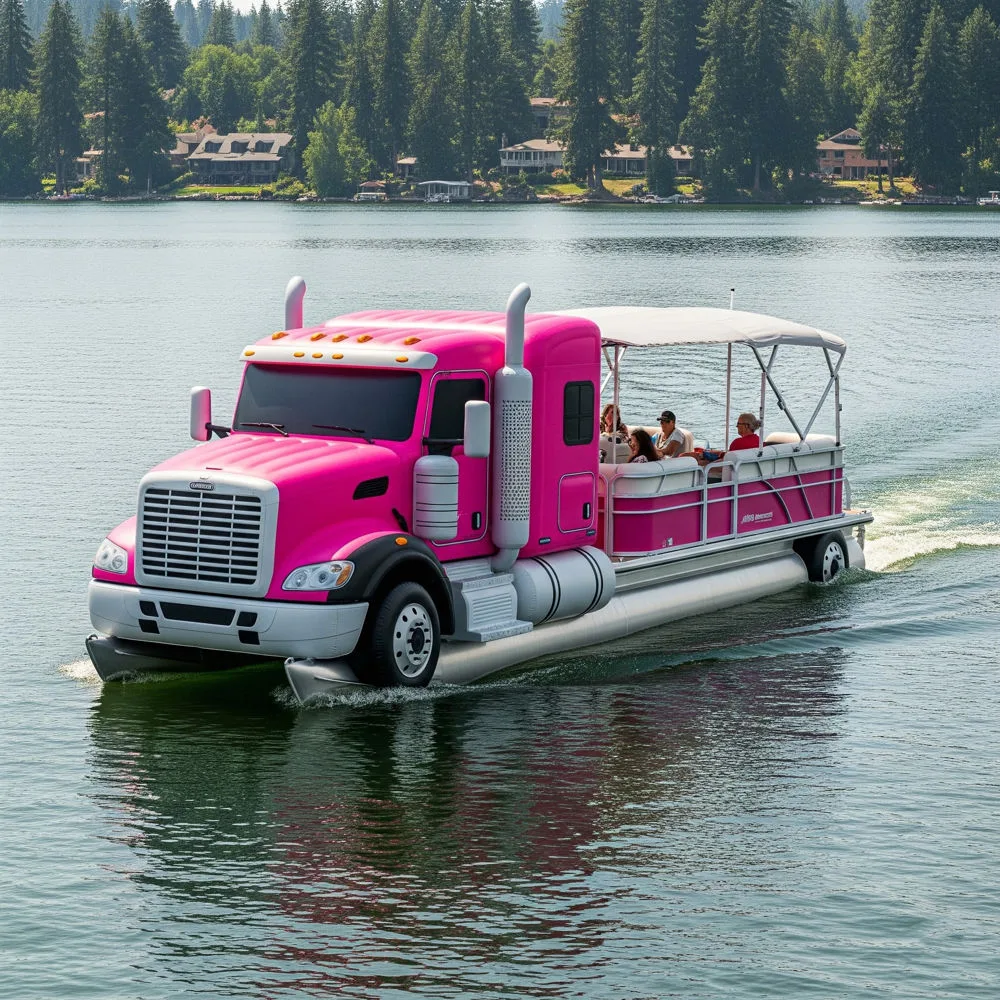
Semi truck pontoons are specialized transportation systems that combine the power and mobility of semi trucks with the buoyancy and stability of pontoon structures. These unique vehicles serve multiple purposes, from transporting heavy equipment across challenging terrain to creating temporary bridges and waterway crossings. The engineering behind these systems represents decades of innovation in both automotive and marine technology.
The concept emerged from the need to transport extremely heavy loads across terrain that traditional trucks simply cannot navigate. When standard roadways are unavailable, damaged, or nonexistent, semi truck pontoons provide a versatile solution that adapts to various environmental challenges. These systems have become indispensable in military operations, disaster relief efforts, and large scale construction projects.
The Engineering Marvel Behind Semi Truck Pontoons

Structural Design and Components
The construction of semi truck pontoons involves sophisticated engineering principles that must account for both terrestrial and aquatic environments. The pontoon sections are typically constructed from high grade aluminum or steel, designed to provide maximum buoyancy while maintaining structural integrity under extreme loads. These pontoons feature watertight compartments that can be individually sealed, ensuring that even if one section is compromised, the entire system remains functional.
The connection between the semi truck and pontoon system utilizes advanced hydraulic and mechanical coupling systems. These connections must be incredibly robust, capable of transferring the full weight and power of the truck while allowing for the natural movement that occurs when operating on water or unstable terrain. The engineering tolerances are measured in fractions of inches, ensuring perfect alignment and load distribution.
Power and Propulsion Systems
Modern semi truck pontoons incorporate multiple propulsion systems to maximize versatility. The primary power comes from the truck’s engine, which drives both the wheels and specialized water propulsion units. These propulsion systems often include jet drives or propeller systems that can be engaged when the vehicle enters aquatic environments.
The power management systems in these vehicles are particularly sophisticated, automatically adjusting power distribution between terrestrial and aquatic propulsion based on environmental conditions. Advanced computer systems monitor load distribution, water levels, and terrain conditions to optimize performance in real time.
Applications and Industries Using Semi Truck Pontoons
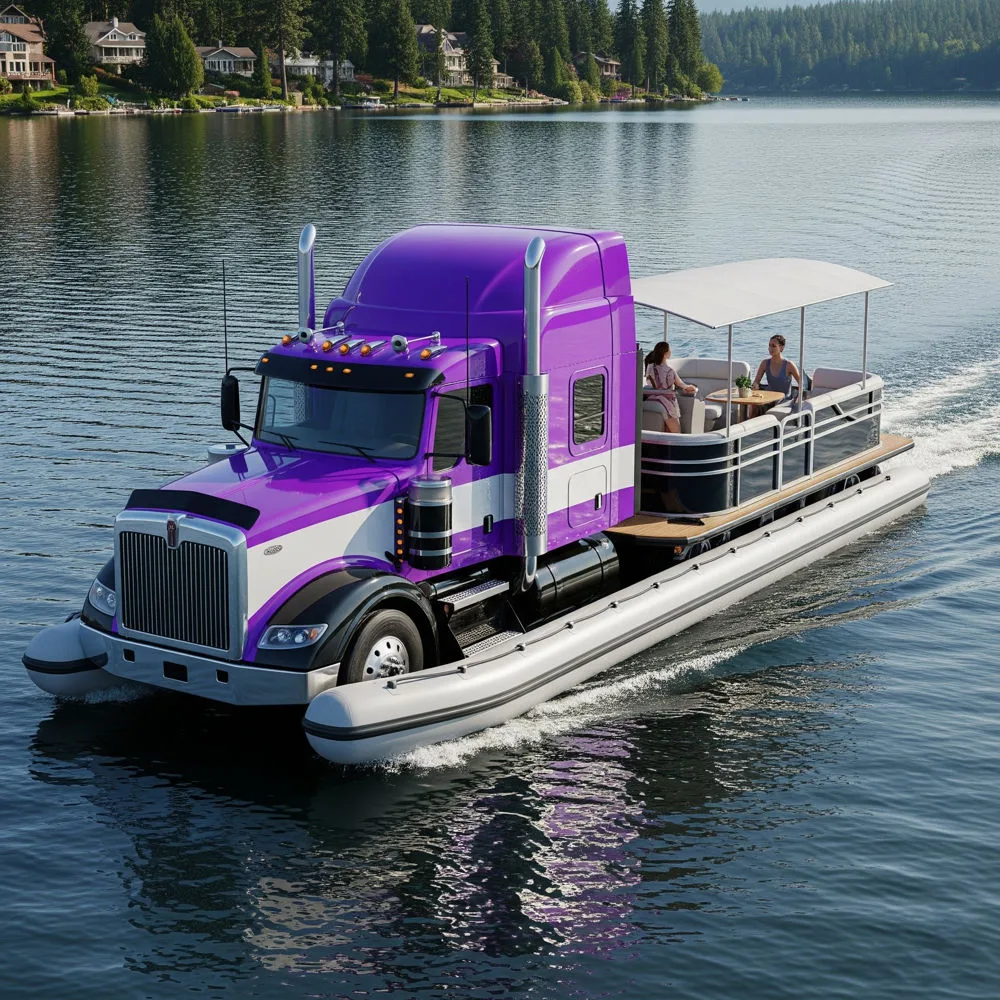
Military and Defense Operations
The military applications for semi truck pontoons are extensive and critical to modern defense operations. These vehicles excel in rapid deployment scenarios where traditional infrastructure is unavailable or has been compromised. Military engineers use these systems to quickly establish supply lines across rivers, marshlands, and other challenging terrain that would otherwise require lengthy detours or permanent bridge construction.
In combat situations, the ability to rapidly transport heavy equipment across water barriers can be the difference between mission success and failure. Semi truck pontoons enable military forces to move tanks, artillery, and other critical equipment across environments that would stop conventional transport vehicles completely.
Construction and Heavy Industry
The construction industry has embraced semi truck pontoons for projects in remote locations where traditional infrastructure is insufficient. Large construction projects often require moving massive equipment to sites that are accessible only by water or across terrain that would damage conventional roads. These specialized vehicles enable construction companies to transport bulldozers, excavators, and other heavy machinery directly to work sites without the need for expensive infrastructure development.
Oil and gas operations, particularly in remote areas, rely heavily on semi truck pontoons for equipment transport. These vehicles can navigate the challenging terrain common in oil fields while carrying the specialized equipment necessary for drilling and extraction operations.
Emergency Response and Disaster Relief
During natural disasters, traditional transportation infrastructure often becomes impassable or completely destroyed. Semi truck pontoons provide emergency response teams with the capability to deliver critical supplies and equipment to affected areas regardless of road conditions. These vehicles have proven invaluable during flood response operations, where they can operate both as transport vehicles and as temporary emergency platforms.
Hurricane recovery operations frequently utilize semi truck pontoons to access communities that have become isolated due to damaged bridges or flooded roadways. The versatility of these systems allows emergency responders to adapt quickly to changing conditions and reach people who might otherwise be inaccessible.
Technical Specifications and Capabilities
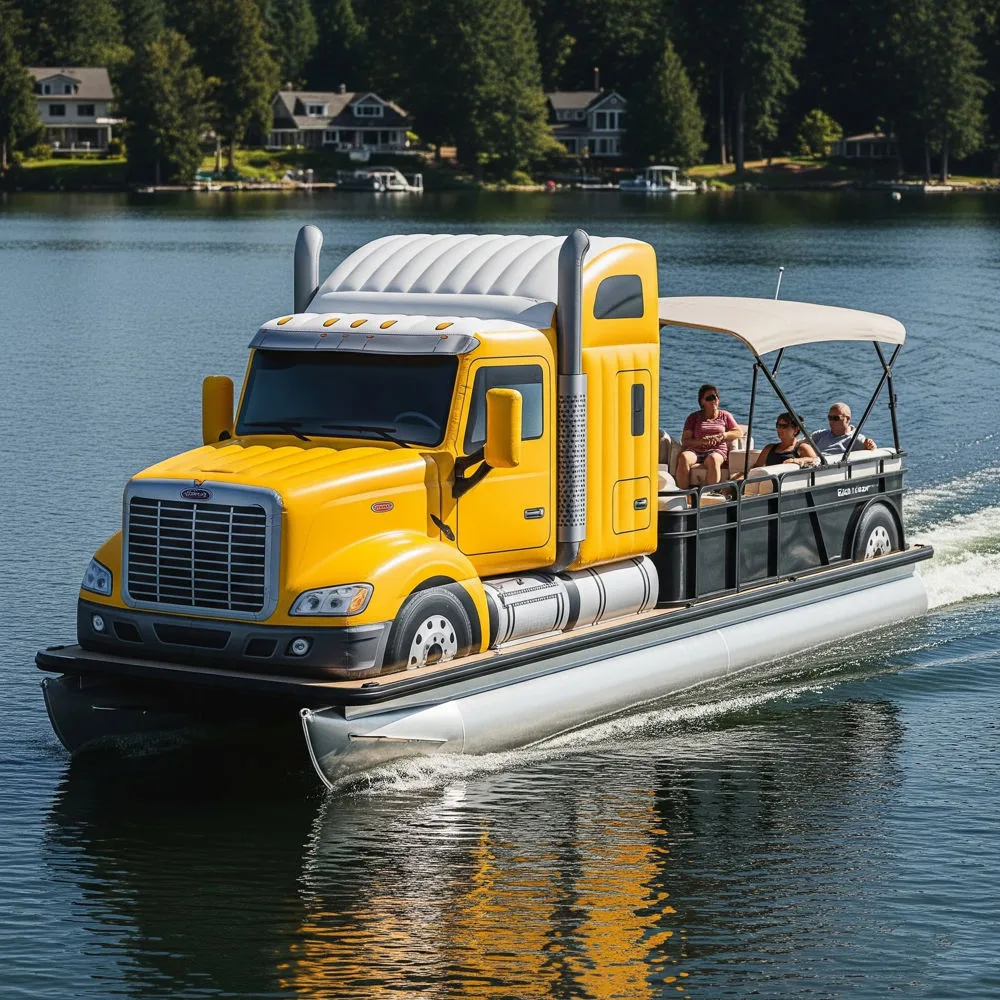
Load Capacity and Weight Distribution
The load capacity of semi truck pontoons varies significantly based on design and intended application. Standard configurations can typically handle loads ranging from 40 to 80 tons, though specialized versions can accommodate even heavier payloads. The key to successful operation lies in proper weight distribution across the pontoon system.
Advanced load management systems continuously monitor weight distribution and can make real time adjustments to pontoon buoyancy chambers. This dynamic load management ensures optimal stability and performance across varying payload configurations and environmental conditions.
Speed and Maneuverability
While semi truck pontoons are not speed demons, they offer impressive maneuverability considering their size and load capacity. On land, these vehicles typically operate at speeds comparable to standard heavy haul trucks, usually ranging from 25 to 45 miles per hour depending on terrain and load conditions.
Water operations require different performance metrics, with emphasis on stability and control rather than speed. Most semi truck pontoons can achieve water speeds of 8 to 15 knots, which is sufficient for most practical applications while maintaining safe operation parameters.
Maintenance and Operational Considerations
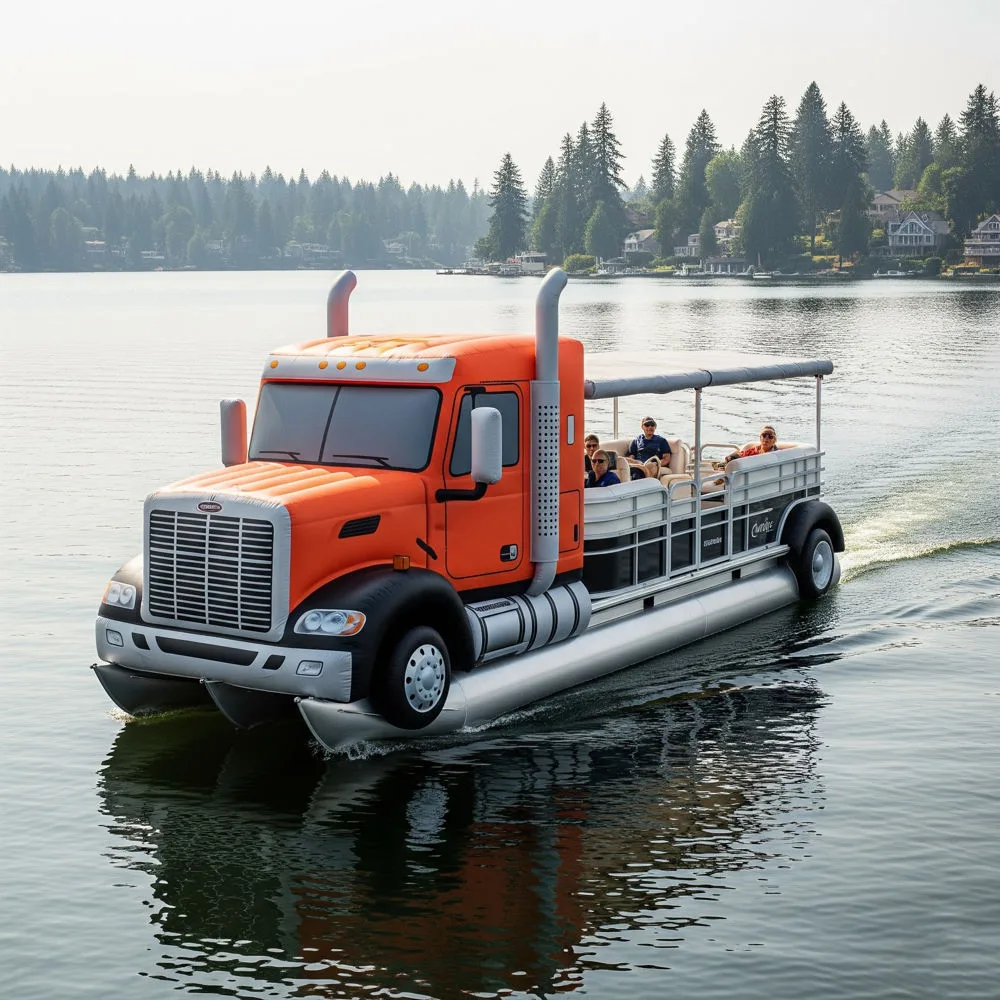
Routine Maintenance Requirements
Operating semi truck pontoons requires specialized maintenance protocols that address both automotive and marine systems. Regular inspections must cover engine systems, hydraulic components, pontoon integrity, and propulsion systems. The complexity of these vehicles means that maintenance personnel must be trained in multiple disciplines.
Pontoon maintenance is particularly critical, as any compromise in watertight integrity can lead to catastrophic failure. Regular pressure testing, seal inspection, and corrosion prevention are essential components of any maintenance program. The harsh environments these vehicles often operate in accelerate wear and require more frequent maintenance intervals than standard trucks.
Operator Training and Certification
Operating semi truck pontoons requires specialized training that goes far beyond standard commercial driving licenses. Operators must understand marine navigation principles, load management systems, and emergency procedures specific to amphibious operations. Many jurisdictions require additional certifications for operators of these specialized vehicles.
Training programs typically include both classroom instruction and extensive hands on experience in controlled environments. Operators must demonstrate proficiency in both terrestrial and aquatic operations before being certified for independent operation.
Future Developments and Technology Trends
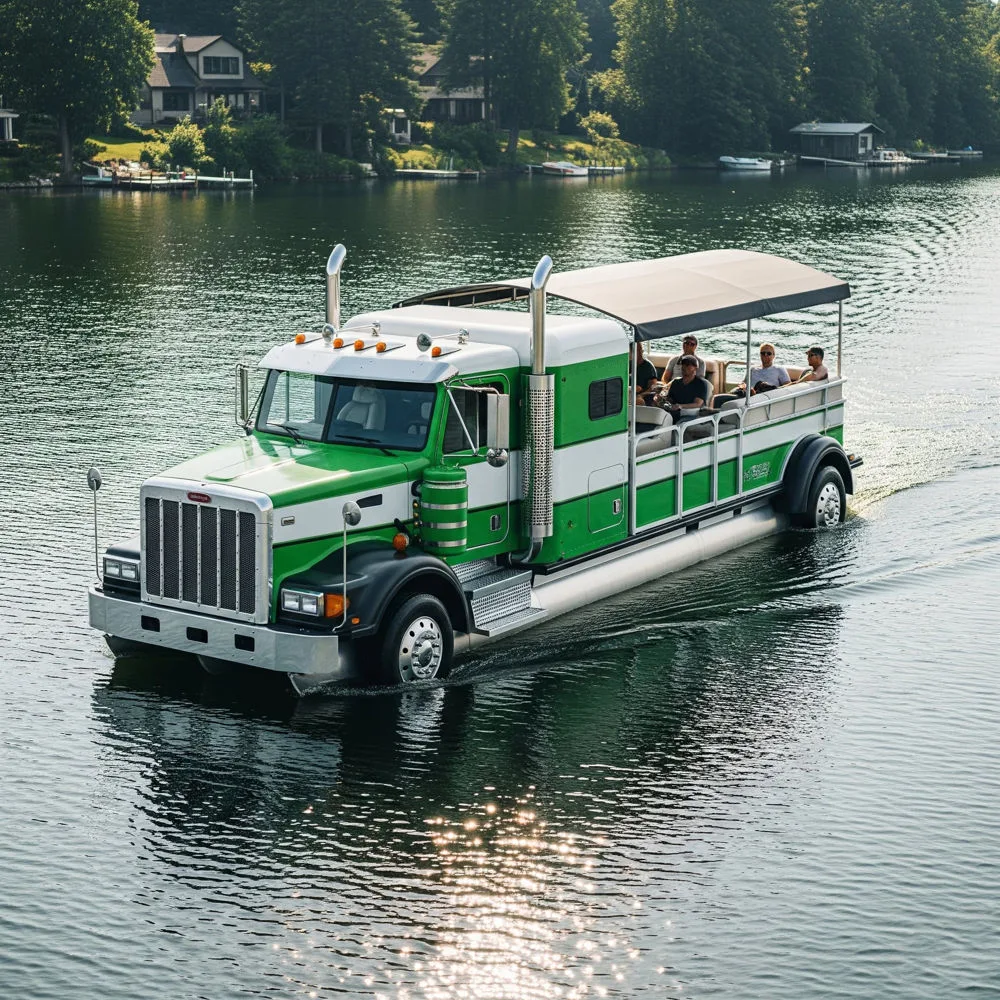
Automation and Remote Operation
The future of semi truck pontoons lies increasingly in automation and remote operation capabilities. Advanced GPS navigation systems, combined with artificial intelligence, are enabling these vehicles to operate with minimal human intervention. Remote operation capabilities are particularly valuable in hazardous environments where human operators would be at risk.
Automated load management systems are becoming more sophisticated, using predictive algorithms to optimize performance based on environmental conditions and payload characteristics. These systems can make adjustments faster and more precisely than human operators, improving both safety and efficiency.
Environmental Considerations and Sustainability
Modern semi truck pontoons are incorporating more environmentally friendly technologies, including hybrid propulsion systems and advanced emission control systems. The industry is moving toward solutions that minimize environmental impact while maintaining operational effectiveness.
Research into alternative fuel sources, including hydrogen and electric power systems, is ongoing. While the power requirements of these vehicles present challenges for alternative energy sources, advances in battery technology and fuel cell systems are making these options increasingly viable.
Cost Considerations and Economic Impact

Initial Investment and Operational Costs
The investment required for semi truck pontoons is substantial, with new systems typically costing several million dollars depending on specifications and capabilities. However, the unique capabilities these vehicles provide often justify the investment for organizations that regularly operate in challenging environments.
Operational costs include specialized maintenance, operator training, insurance, and regulatory compliance expenses. While these costs are higher than standard trucking operations, the ability to access otherwise unreachable locations often provides significant economic advantages that offset the additional expenses.
Return on Investment Analysis
For organizations that frequently need to transport heavy equipment across challenging terrain, semi truck pontoons can provide excellent return on investment. The time savings alone, from not having to build temporary roads or wait for infrastructure repairs, often justifies the investment within a few years of operation.
The versatility of these systems means they can serve multiple roles within an organization, from routine heavy transport to emergency response capabilities. This multi purpose functionality increases their value proposition significantly.
Conclusion
Semi truck pontoons represent a remarkable achievement in specialized transportation engineering, combining the best aspects of heavy duty trucking with amphibious capabilities. These unique vehicles have proven their worth across multiple industries, from military operations to construction projects and emergency response situations.
The technology behind semi truck pontoons continues to evolve, with advances in automation, environmental sustainability, and operational efficiency driving innovation in this specialized field. As infrastructure challenges become more complex and environmental considerations more pressing, these versatile transportation solutions will likely play an increasingly important role in logistics and transportation planning.
Whether you’re involved in heavy industry, emergency services, or simply fascinated by innovative transportation solutions, understanding semi truck pontoons provides insight into the cutting edge of specialized vehicle engineering. These remarkable machines demonstrate how creative engineering can overcome seemingly impossible transportation challenges, opening up possibilities that seemed impossible just decades ago.
The future of semi truck pontoons looks bright, with ongoing technological advances promising even greater capabilities and efficiency. As we face increasing infrastructure challenges and environmental considerations, these specialized vehicles will undoubtedly continue to evolve and adapt, providing critical transportation solutions for the most demanding applications imaginable.

